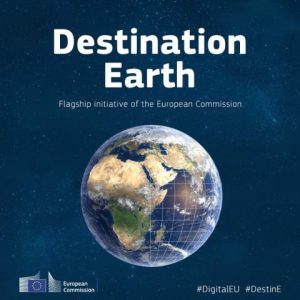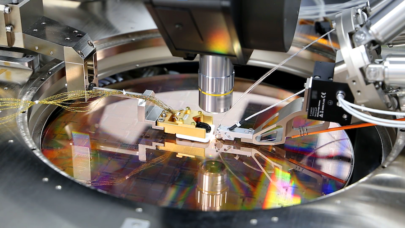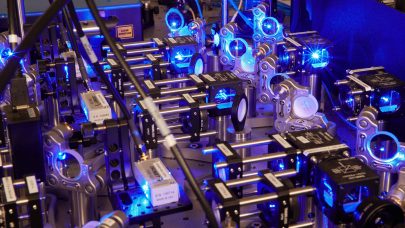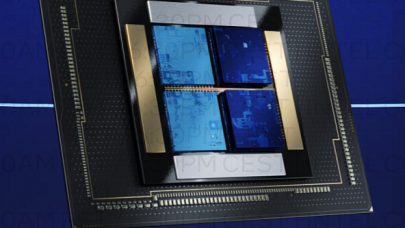Jan. 19, 2023 — The Barcelona Supercomputing Center – Centro Nacional de Supercomputación (BSC-CNS) is one of the key participants in the development of so-called digital twins of the Earth within the EU’s Destination Earth initiative (DestinE). DestinE is an ambitious initiative that brings together the EU’s green transition and the Digital Europe Programme in an effort to find solutions to the climate change crisis. The goal is to develop highly accurate digital twins of Earth in order to predict the effects and build resilience to climate change.
 The DestinE initiative has been funded through mid-2024 by an initial €150 million investment from the Digital Europe Programme. It is being implemented by three entrusted entities, namely the European Centre for Medium-Range Weather Forecast (ECMWF), the European Space Agency (ESA) and the European Organization for the Exploitation of Meteorological Satellites (EUMETSAT). The initiative will be developed over 7 to 10 years, after which a complete digital replica of the Earth will be achieved through the convergence of the digital twins developed. This replica will be able to monitor and predict the health status of the planet by examining the effects of climate change and the evolution of natural systems such as the oceans, atmosphere, and forests. It will allow stakeholders to evaluate the effectiveness and impact of public environmental policies.
The DestinE initiative has been funded through mid-2024 by an initial €150 million investment from the Digital Europe Programme. It is being implemented by three entrusted entities, namely the European Centre for Medium-Range Weather Forecast (ECMWF), the European Space Agency (ESA) and the European Organization for the Exploitation of Meteorological Satellites (EUMETSAT). The initiative will be developed over 7 to 10 years, after which a complete digital replica of the Earth will be achieved through the convergence of the digital twins developed. This replica will be able to monitor and predict the health status of the planet by examining the effects of climate change and the evolution of natural systems such as the oceans, atmosphere, and forests. It will allow stakeholders to evaluate the effectiveness and impact of public environmental policies.
The simulated digital planet is expected to visualize different scenarios of what a changing present is and what the future might look like, taking into account the climate and weather changes and observing and simulating what might happen when the planet gets a few degrees warmer and the sea level rises. The idea is to create a scalable system; i.e., one in which more and more data can be introduced.
According to the initiative’s schedule, the deployment and implementation of the first two digital twins are to take place from mid-2022 through 2023. ECMWF will be responsible for delivering these two high-priority twins in the first phase of DestinE, as well as the twin-engine and the software infrastructure that will power them. The European High Performance Computing Joint Undertaking (EuroHPC JU) will be in charge of providing the supercomputing resources required to put them in place.
The first twin, the Weather-Induced and Geophysical Extremes Digital Twin (aka On-demand Extremes DT) will focus on extreme weather and provide capabilities for assessing and predicting environmental activity in support of risk assessment and management. The continuous global component of this twin will be developed by ECMWF, while the on-demand component will be developed by a partnership led by the French institution Météo-France.
The second digital twin, the Climate Change Adaptation Digital Twin (aka Climate DT), will provide capabilities and services to support climate adaptation policies by combining various observations and simulation capabilities. The main contractor of this twin is CSC – IT Center for Science Ltd, in Finland.
Multiple European institutions participated in the first round of contracts issued by ECMWF to develop the two first twins by April 2024. With a total budget of around €4.5 million, BSC is one of the European institutions with the largest contribution in this first round and one of the few to be involved in both twins. This places the BSC as a key player in the development of the DestinE initiative.
On-demand Extremes DT: Addressing the Impacts of Extreme Events
The On-demand Extremes DT aims to provide short-range predictions with an increased resolution to sub-km scales. It will tackle the impacts of extreme events in three sectors: hydrology, air quality, and renewable energy. The forecasts of extreme hydrological events, such as floods, and possible mitigation actions will be explored, with an initial focus on nine case studies across Europe, representing the variety of atmospheric and geographical conditions in the continent.
This digital twin will also investigate the added value of high resolutions for simulating hazardous air quality situations by using an ensemble of air quality scientific models. The renewable energy use cases will focus on circumstances where traditional weather forecasts cannot anticipate events impacting energy production, such as large thunderstorms or fog.
During phase 1 of the development of this twin, the majority of components should be ready and initial tests performed. A proper verification and evaluation approach should be defined and the added value demonstrated for the hydrology test cases. Moreover, the air quality multi-model ensemble setup should be defined and described.
BSC will support the implementation of On-demand Extremes DT in the EuroHPC JU environment, increasing the computational efficiency of the scientific models. “The execution of the models of the On-demand Extremes DT would not be possible without the newly chosen EuroHPC supercomputer platforms. The group will bring the expertise of two leading supercomputing centers in Europe: CSC in Finland and BSC in Spain, as well as dedicated domain experts, to widely support the models’ development and ensure the efficient use of the new EuroHPC supercomputers,” said Dr Mario Acosta, leader of the High Performance Computing team of the Earth Sciences Department at BSC.
Climate DT: A New Generation of Earth-System Models
For Climate DT, not only will BSC make available one of the most potent European supercomputer infrastructures—the Marenostrum 5—but the institution also will be involved in developing and applying a new generation of Earth-system models to different impact sectors, such as wildfires and urban environments. These innovative models, which will produce data with unprecedented spatial resolution, are already being developed under the EU’s Horizon2020 nextGEMS project.
“Climate DT uses the recent breakthroughs in the connection between climate modeling and the production of user-relevant climate information,” said Professor Francisco Doblas, director of the Earth Sciences Department at the BSC.
He added: “The recent developments in global climate modeling and high-performance computing, and a better understanding of user requirements will allow stakeholders from relevant impact sectors to contribute to the design of the digital twin. This co-design represents a paradigm shift in the provision of climate information.”
This second climate-devoted twin will demonstrate its added value for applications of societal relevance by developing prototype use cases with users from five climate adaptation impact sectors: urban environments, hydrology, hydro-meteorology, energy, and forestry. Thus, it will create a basis for an interactive information system tailored to the user’s needs via innovative co-design strategies that can be scaled up for broader use in future phases of DestinE.
Supercomputing Requirements
Considering that a small prediction system with few variables can produce vast amounts of data, designing one like DestinE (not only with more variables but also with much increased detail) will multiply the data exponentially. This virtual version of our planet will need massive data collected from the real world to be functional.
What makes Destination Earth unique is that climate data at an unprecedented spatial and time resolution will be made available to the users as they are produced, allowing them to obtain products that were not possible before with such a level of detail and provide timely feedback on this output and further requirements. This is only possible with the latest generation of EuroHPC supercomputers and a set of models and tools optimized to take advantage of the new possibilities.
By 2030, the European Commission expects to have created more twins to form a complete, integrated twin of the Earth. These developments move forward the long-term investments of ECMWF Member States in building a unique European prediction capability and will support further advancement of global numerical weather prediction and environmental monitoring.
Source: BSC-CNS


























































